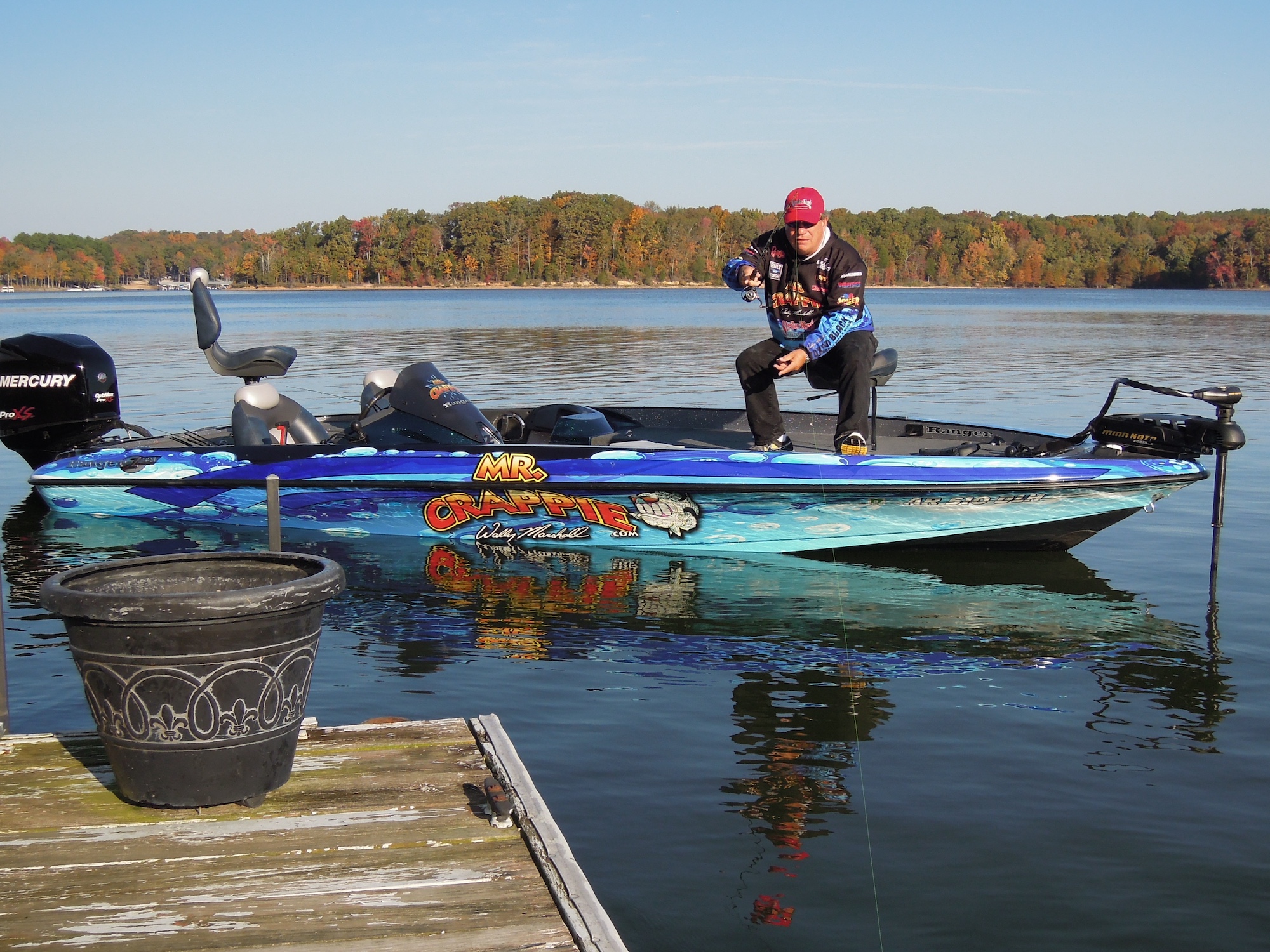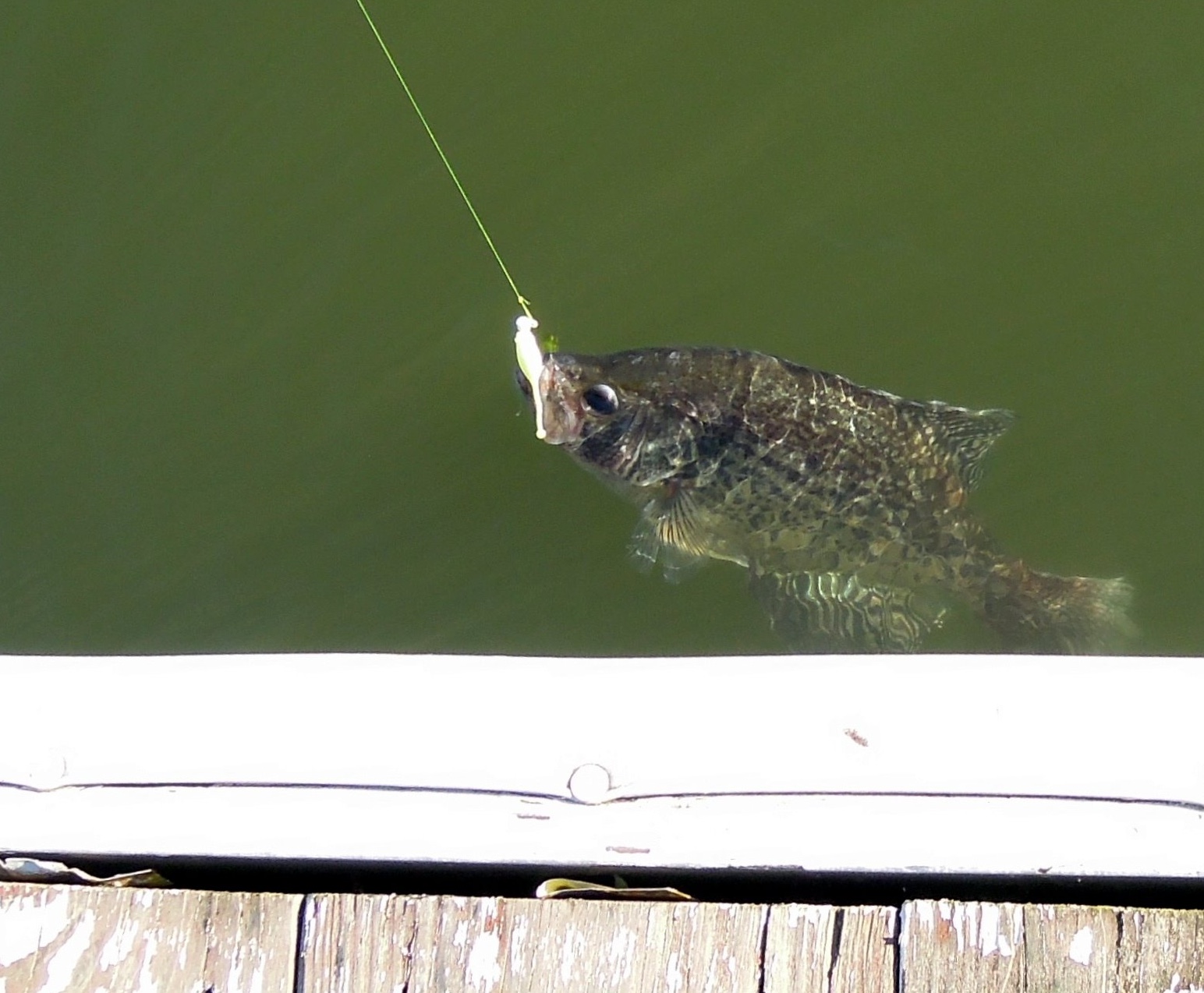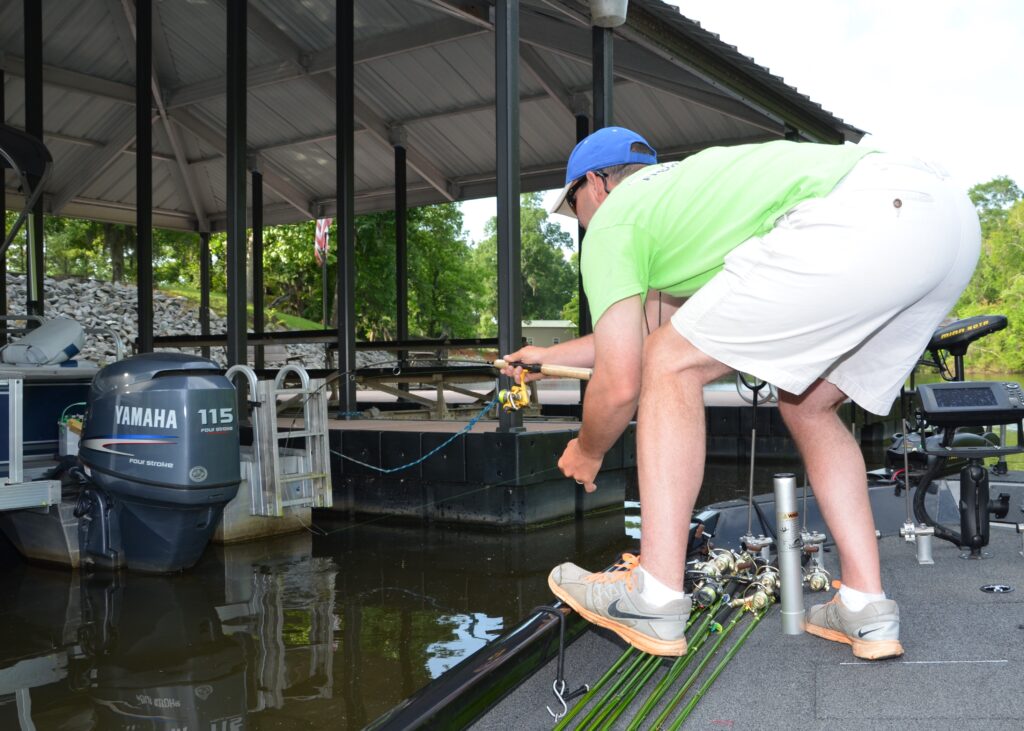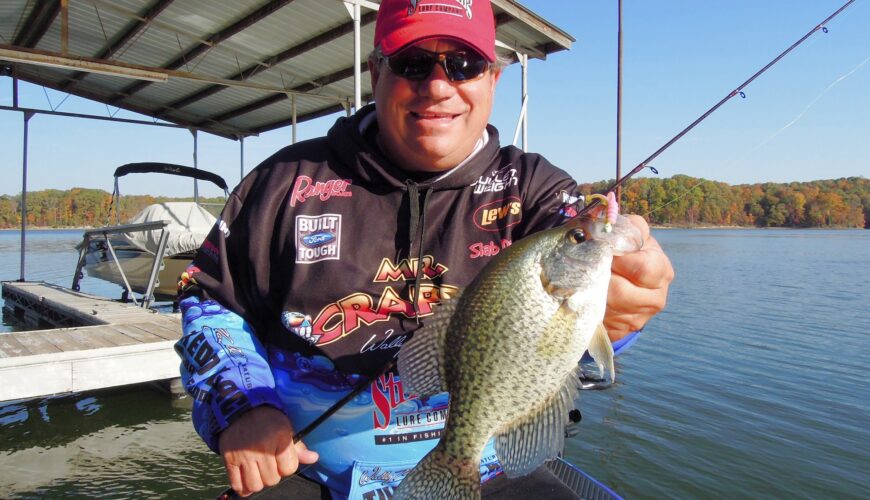Tactics
Sporting Clays Technique: How To Deal With Teal
November 24, 2025 •Mark Chesnut
July 28, 2025
Before gunpowder, hunters and warriors propelled rocks, arrows and other missiles with kinetic energy to bag prey or kill their enemies.
Bows create energy by bending. As an archer releases an arrow, the bow straightens, driving the projectile forward with great force. Modern anglers can use these same physics principles to catch bigger fish.
Crappie love to hunker down in the tightest cover. On practically every lake or river, anglers see docks, fishing piers, moored boats, boathouses and other objects jutting over the water. These structures create excellent places for big fish to hide from avian predators like ospreys and ambush prey. However, multiple pilings and bracing beams create barriers to reaching these fish.
Countless anglers drop baits near outside pilings or troll past them, but the really big fish hide in the most inaccessible cover and might never see baits. To land these wily ol’ slabs, think like a hunter, specifically a bow hunter, and “shoot the docks.”
“I love shooting docks,” explained Wally “Mr. Crappie” Marshall, (www.mrcrappie.com) from Texas. “Sometimes, I catch more than 50 crappie from under one dock. Anybody can do it.”
The Tools & The Trade
For shooting docks, use flexible, light or ultralight spinning rods. Open the bail and grab the lure by the jighead. Bend the rod to build up energy like a bow. Pick an opening between a dock and the water or a crack between pilings and let fly.
As the rod releases the energy, it propels the lure forward. When targeting openings between vertical objects, such as pilings or boats tied to piers, hold the rod vertically. When shooting into spaces between the dock and water surface, hold the rod parallel to the water and shoot horizontally.
With remarkable accuracy, the unbending rod flings small lures under places that few other anglers even attempt to fish. If done correctly at a low angle, the bait hits the water surface like a flat rock and skips farther back under cover. The farther back the jig travels, the more likely it runs through unfished waters. With high-tech electronics, anglers can even target individual fish.
“Load up the rod like a bow and release the jig to catapult it under the dock as far as possible,” Marshall detailed. “With a seven-foot rod and four-pound test line, I can shoot a 1/16-ounce jig 50 to 60 feet with no problem. Solid bodies skip farther than people can shoot them.”

“Mr. Crappie” Wally Marshall has caught countless crappie shooting docks. John N. Felsher Photo
Best “Shooting” Lures
A skilled dock shooter can fling practically any enticement under docks or other tight spots. Many crappie enthusiasts use 1/64- to 1/8-ounce jigheads tipped with plastic or hair trailers. Others use Road Runner jighead spinners or tiny flies. Any crappie lure could work.
“Crappie go under docks to feed,” remarked Jonathan Phillips from Alabama. “I use a 1/32-ounce jighead on four-pound test high visibility line so I can see the bites. That jig gives a good slow fall. When a jig slowly falls, crappie have time to look at it and decide to hit it before it moves away too quickly.”
Retrieve baits as close as possible to pilings or other structures. Hit every piece of cover from different angles to determine the best patterns that day. Occasionally pause to let lures sink a bit before resuming the retrieve. Sometimes, crappie suck down bait as they slowly sink past them. The biggest fish seek the darkest shadows farthest under any overhanging cover.
“I shoot jigs as far under docks as I can into the darkest spot I can find,” advised Steve Brown, a professional crappie angler from Alabama. “In hot weather, shade is the key. I always go to the dock with the most shade and good water depth. I’ll hit a spot six to eight times. If nothing bites, I’ll move to another spot.”

Older docks with crusty pilings make the best ones to fish. John N. Felsher Photo
Top Spots
Older docks with crusty pilings make the best ones to fish since they’ve been in the water longer. An opening covered by an intact spider web indicates that no one fished that spot for a while. In addition, look for docks close to deeper water. Creek channels or tributary ditches that swing close to docks allow fish to easily rise into the shallows to hunt or plunge into the depths for security.
“I like docks near main channels where the bottom drops off into deeper water,” Marshall said. “My favorite depth is about 10 to 15 feet deep in front of the dock. Not all lakes have water that deep, particularly in places like Florida, but crappie adjust to getting into shallow water. In the summer, the best oxygen is often under the shadiest docks. That’s where the fish will go.”
Even under the deepest docks, crappie frequently suspend around pilings. They commonly hover right beneath floating platforms or boat hulls. For suspended fish, try dangling a hair jig under a tiny clear float.
“When fish are shallow or suspended one to three feet under the surface, I add a small cork to my line,” instructed Russ Bailey, an Ohio crappie pro. “I tie on a 1/32- or 1/48-ounce leadhead with a shad tail trailer. When I pop that jig very lightly, the tail starts to flutter and gets the fish’s attention. It sits in a fish’s face for several seconds until the hungry crappie can’t take it anymore.”
Any dock with rod holders and lights positioned to shine over the water usually indicates a good place to fish. Those lights probably face a brush pile or two. Where legal, dock owners recurrently toss leftover bait, fish carcasses or food scraps into the water. These morsels attract sunfish, shiners, shad and other forage species. Big crappie go where they can find easy meals.
Never overlook moored boats. Sometimes, boats sit unused for years. Algae blooms on the hulls, lines, trim tabs and lower units. That growth feeds minnows and other small creatures. Floating pontoon boats create abundant places for anglers to shoot jigs. Anglers typically shoot lures between the floats. Some people intentionally ping their baits off metal pontoons or dock structures to create vibrations that arouse curiosity in fish.

Don’t overlook moored boats, especially those that have sat there for years collecting minnow-attracting algae, which also attracts crappie. John N. Felsher Photo
Adjusting for Rivers
On rivers, watch how the current flows. Pilings and other objects create little eddies behind them. Crappie don’t like to sit in current, but stay in slack spots looking into the flow. Rushing waters push fresh bait under docks where hungry crappie pounce on anything too irresistible to ignore. Work baits with the flow until they reach slack spots. Then, pause the retrieve so that the lure sinks into the eddy. Floats thrown upstream carry suspended baits through honey holes.
“When fishing rivers, I look for docks that create some type of current breaks,” Brown advised. “Probably 99 percent of the time, crappie hit a jig as it falls.”
Most anglers shoot docks, boathouses and other manmade structures, but people could shoot lures under fallen trees, overhanging rock formations and other natural features. Anything protruding low over the water or barely touching the surface creates an incredible place to shoot an enticement.
 John N. Felsher is a professional writer, broadcaster, photographer, editor and consultant. An avid sportsman, he’s written more than 4,000 articles for more than John N. Felsher is a professional writer, broadcaster, photographer, editor and consultant. An avid sportsman, he’s written more than 4,000 articles for more than 176 different magazines on a wide variety of outdoors topics. He also hosts an outdoors tips show for WAVH FM Talk 106.5 radio station in Mobile, Ala. Contact him at j.felsher@hotmail.com or through Facebook.
John N. Felsher is a professional writer, broadcaster, photographer, editor and consultant. An avid sportsman, he’s written more than 4,000 articles for more than John N. Felsher is a professional writer, broadcaster, photographer, editor and consultant. An avid sportsman, he’s written more than 4,000 articles for more than 176 different magazines on a wide variety of outdoors topics. He also hosts an outdoors tips show for WAVH FM Talk 106.5 radio station in Mobile, Ala. Contact him at j.felsher@hotmail.com or through Facebook.
